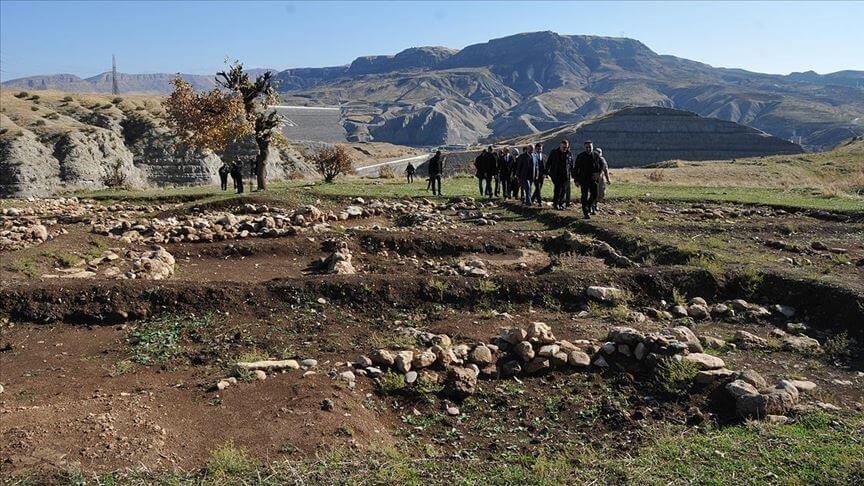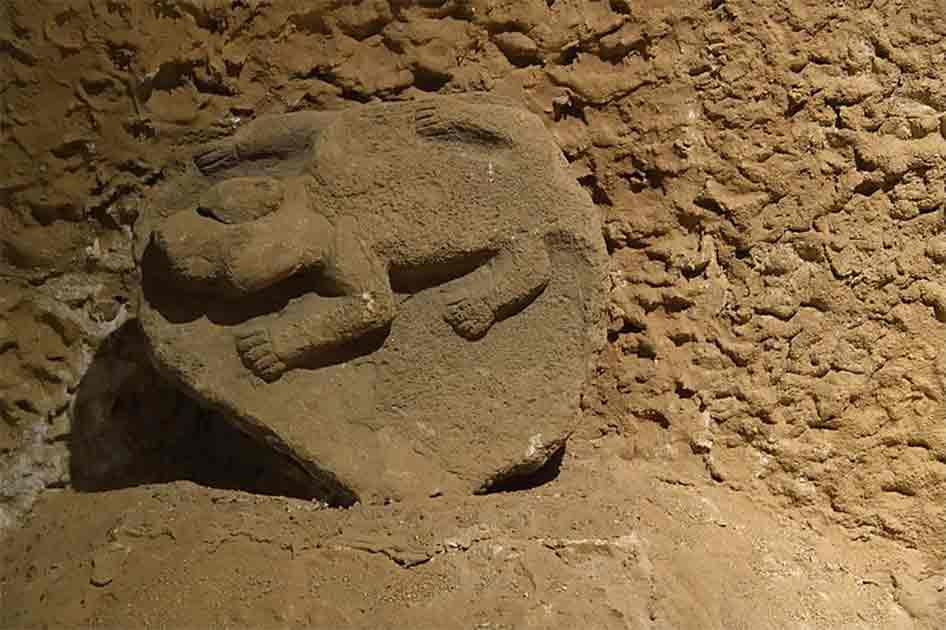
Boncuklu Tarla: The Town Older Than Gobekli Tepe
The ancient site of Boncuklu Tarla in Mardin, Turkey is re-writing history, and experts are now sure it’s older than Gobekli Tepe.
By: Robbie M. | Historic Mysteries
Türkiye’s Gobekli Tepe has long been considered the world’s oldest settlement, an extraordinary outlier. Here, temples and carved stone structures were erected in an unmistakably ceremonial way, hinting at a truly ancient collective, a civilization which far predates all others.
The site is Neolithic, potentially more than 11,000 years old. Nothing else existed for many millennia afterwards until ancient civilizations appeared elsewhere, or at least that was what everyone thought. But in recent years a challenger has arisen.
Turkish archaeologists believe they have found an even older town nestled in the Anatolian region of Türkiye. Its name is Boncuklu Tarla, or “Beaded Field,” and some have claimed it’s even older than its neighbour, Gobekli Tepe.
However, research on the site is still relatively fresh, and much of it remains unexplored. Many questions are left unanswered, and archaeologists will have their work cut out if they want to unseat Gobekli Tepe as the world’s oldest settlement.
Is Boncuklu Tarla the World’s Oldest Settlement?
Nestled in the heart of the Konya Plain in central Türkiye, a settlement can be found that supposedly predates Gobekli Tepe by almost 1,000 years. Located on a fertile plain in a region rich in ancient history, Boncuklu Tarla is one of the most exciting archaeological finds in recent memory.
Local archaeologists believe the settlement was occupied from the Late Epipalaeolithic era (around 10,000 BC) until the Pre-Pottery Neolithic B period (8,700-6000 BC). Amazingly, this would make Boncuklu Tarla around 12,000 years old, but until shockingly recently, it was completely forgotten.
In a twist of fate, the site was only rediscovered in 2008 by accident during a prospecting dig near Mardin Province’s Ilisu dam. After a four-year wait, excavation work finally began, led by Türkiye’s Mardin Museum.
The initial 2012 excavation was more of a conservation attempt and was part of a broader initiative focused on documenting and preserving cultural assets affected by the Ilısu Dam and HES Project. This endeavour involved more than 15 restorers and archaeologists, along with 50 workers.

In 2017, Dr. Ergül Kodaş of the University of Mardin Artuklu took over the site and began excavating its eastern section. His dig revealed that Boncuklu Tarla had been occupied during three distinct phases around 10,000 BC and uncovered four distinct types of structures as well as a sewage system and more than two dozen artefacts.
These artefacts included decorative objects like beads as well as obsidian and flint tools, arrowheads, gimlets, and microliths. The most impressive find, however, has been the large communal buildings, which some have called temples, found at the site’s centre surrounded by dwellings.
The architecture of these buildings is surprisingly advanced, and the number of buildings hints at a once thriving and prosperous settlement. This was a people who came together to build large, communal projects, and who built a society together.
The People of Boncuklu Tarla
With research in its infancy, little is known specifically about the ancient peoples who once lived in Boncuklu Tarla. However, thanks to its location’s rich ancient history, archaeologists have been able to hazard some early conclusions.
From the evidence left behind, it seems likely that Boncuklu Tarla pre-dates prominent civilizations known to have inhabited this area, like the Sumerians, Akkadians, Babylonians, or the Hittites. However, both the Çatalhöyük and Hacılar cultures are known to have inhabited the broader Anatolian region during this period, and it is possible that the people of Boncuklu Tarla mixed with and interacted with them.
Urartu: Who Were The Fortress Kings of Ancient Armenia?
Excavations at Boncuklu Tarla have revealed architectural marvels and intricate craftsmanship indicative of a sophisticated society. The presence of a temple, along with various building structures and a sewage system, underscores the organized and communal nature of the community.
While the specific cultural identity of the people who inhabited Boncuklu Tarla remains a subject of ongoing research, their legacy endures through the remnants of their civilization. Through meticulous excavation and analysis, archaeologists strive to unravel the complexities of this ancient community and its place within the broader context of Anatolian history.
Boncuklu Tarla is intricately linked to other extremely old sites in the Anatolian region, such as Göbekli Tepe and Karahan Tepe. These sites collectively offer invaluable insights into the early stages of human civilization and the development of complex societies in ancient times.

Göbekli Tepe, located just 30 kilometres (19 miles) northwest of Boncuklu Tarla, is renowned as one of the oldest known religious complexes in the world. Dating back over 12,000 years, Göbekli Tepe predates the advent of agriculture and sedentary lifestyles, challenging previous notions about the timeline of human cultural evolution. Its monumental stone pillars, adorned with intricate carvings of animals and symbols, hint at a sophisticated spiritual belief system practiced by its ancient builders.
Similarly, Karahan Tepe, situated approximately 80 kilometres (50 miles) southeast of Boncuklu Tarla, shares similarities with both Göbekli Tepe and Boncuklu Tarla in terms of its age and archaeological significance. Although less extensively studied than Göbekli Tepe, Karahan Tepe boasts a series of T-shaped pillars and stone structures dating back over 10,000 years, offering further evidence of ancient human habitation in the region.
The proximity of Boncuklu Tarla to these iconic archaeological sites suggests a network of cultural exchange and interaction among ancient communities in the Anatolian region. Shared motifs, architectural styles, and ritual practices observed at these sites indicate a degree of cultural continuity and interconnectedness among the early inhabitants of Anatolia.
As researchers continue to explore the connections between Boncuklu Tarla, Göbekli Tepe, Karahan Tepe, and other ancient sites in the region, they hope to unravel the mysteries surrounding the origins of human civilization in Anatolia and shed light on the cultural, social, and technological innovations that shaped our collective history.
Who Were These People?
Dating back over 11,000 years, Boncuklu Tarla offers a glimpse into a bygone era, where early humans thrived amidst the fertile plains of central Türkiye. The discovery of a temple, building structures, and a wealth of artefacts underscores the sophistication of the ancient civilization that once inhabited this land.
Moreover, the connections between Boncuklu Tarla and other extremely old sites like Göbekli Tepe and Karahan Tepe highlight the interconnectedness of ancient communities in the Anatolian region. Shared motifs, architectural styles, and ritual practices suggest a network of cultural exchange and interaction among these early inhabitants.
As excavations continue and new discoveries are made, Boncuklu Tarla promises to unveil more secrets from its ancient past, enriching our understanding of the origins of human civilization in Anatolia and beyond.
* * *
NEXT UP!
Hell Hound Found: Bones of An Ancient Huge Hound Found At Ruined Abbey
It roamed the countryside spreading death and terror – a giant, ferocious hell-hound with flaming eyes and savage claws.
For centuries, the beast that came to be known as Black Shuck struck fear into the hearts of all who crossed its path.
Just a single glimpse was enough to impart a fatal curse; the briefest encounter sufficient to suck the life from any hapless victim.
* * *
READ MORE: Batman Existed In Mesoamerican Mythology & His Name Was Camazotz
Intresting! Experts Claim That Moses Did Cross The Read Sea, After Finding The Egyptian Army Underwater
Telegram: Stay connected and get the latest updates by following us on Telegram!
We’d love to hear from you! If you have a comment about this article or if you have a tip for a future Collective Spark Story please let us know below in the comment section.
